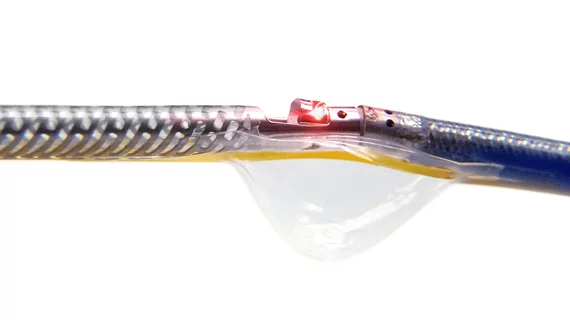Image-guided atherectomy system for smaller vessels gains CE mark
Avinger announced Oct. 18 its Pantheris SV atherectomy device has gained CE mark approval, allowing it to be sold commercially in Europe. The system extends the plaque-removing technique for peripheral artery disease to smaller vessels with diameters between 2 and 4 millimeters.
The Pantheris SV isn’t yet available in the United States, although another version of the Pantheris technology had its American launch in June. That suite of products uses optical coherence tomography to provide real-time intravascular imaging during the catheter-based procedures. Traditional atherectomy devices use x-ray imaging, which requires ionizing radiation, for catheter guidance.
Other improvements with the Pantheris SV include a lower profile and longer length, a stiffer shaft for increased pushability and an enhanced cutter design, according to a press release.
''We believe that Pantheris SV represents a substantial market expansion opportunity for our technology, and having CE Marking for the device represents an important first step towards broader commercialization,'' Avinger president and CEO Jeff Soinski said in the release. ''The longer length and smaller profile of this new device should increase the number of lesions available for treatment by Pantheris, and we believe the safety profile enabled by our image-guidance system should enhance the confidence of physicians applying directional atherectomy to smaller vessels.''

